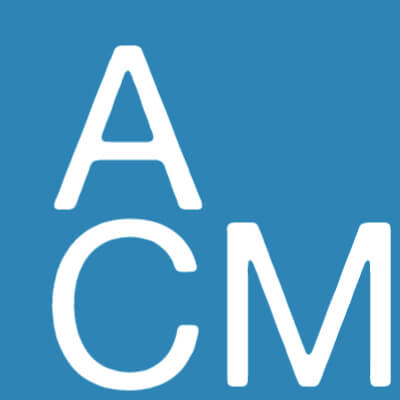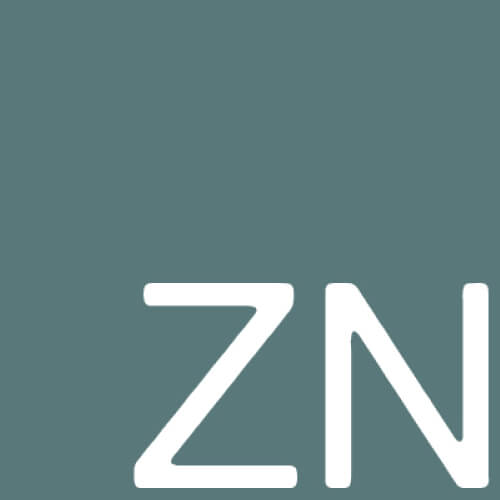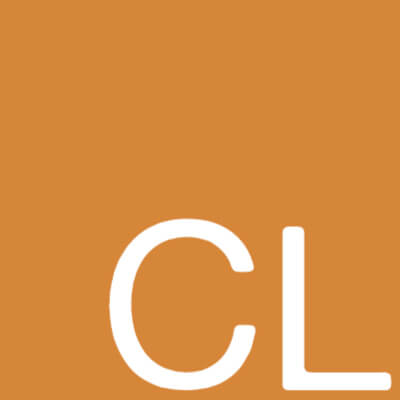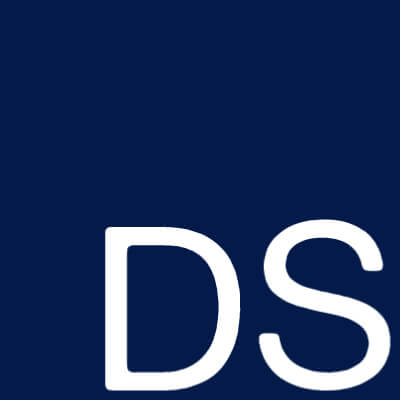AL-VS SPECIFICATION GUIDE
ALVS SPecs for .063
SECTION 072413 Metal Wall Panels .063
NorthClad® AL Series Vertical Stacking Panels
Published: 07/2019
Part 1 General
1.1 Summary
- Section Includes:
- Interlocking aluminum wall panel dry joint, pressure-equalized rainscreen system.
- Accessories including sub girts, aluminum panel splines, aluminum panel bases, head flashings, clips, shims, fasteners, and aluminum trim prefinished to match aluminum wall panels.
- Related Sections:
- Section 05 40 00 – Cold-Formed Metal Framing
- Section 06 10 00 – Rough Carpentry
- Section 06 16 43 – Gypsum Sheathing
- Section 07 25 00 – Air Barriers
- Section 07 62 00 – Sheet Metal Flashing and Trim
- Section 07 92 00 – Joint Sealants
1.2 References
- Reference Standards: Current edition at date of bid.
- American Architectural Manufacturers Association (AAMA):
- AAMA 501.1 – Standard Test Method for Water Penetration of Windows, Curtain Walls and Doors Using Dynamic Pressure.
- AAMA 508-07 – Voluntary Test Method and Specifications for Pressure Equalized Rain Screen Wall Cladding Systems.
- ASTM International:
- ASTM B 117 – Standard Practice for Operating Salt Spray (Fog) Apparatus.
- ASTM B 209 – Standard Specification for Aluminum and Aluminum-Alloy Sheet and Plate.
- ASTM D 294 – Method of Tumbler Test for Coke.
- ASTM D 659 – Method of Evaluating Degree of Chalking of Exterior Paints.
- ASTM D 968 – Standard Test Methods for Abrasion Resistance of Organic Coatings by Falling Abrasive
- ASTM D 2244 – Standard Practice for Calculation of Color Tolerances and Color Differences from Instrumentally Measured Color Coordinates.
- ASTM D 2247 – Practice for Testing Water Resistance of Coatings in 100% Relative Humidity.
- ASTM D 3352 – Standard Test Method for Strontium Ion in Brackish Water, Seawater, and Brines.
- ASTM E 84 – Standard Test Method for Surface Burning Characteristics of Building Materials.
- ASTM E 283 – Standard Test Method for Determining Rate of Air Leakage Through Exterior Windows, Curtain Walls, and Doors Under Specified Pressure Differences Across the Specimen.
- ASTM E 330 – Standard Test Method for Structural Performance of Exterior Windows, Doors, Skylights and Curtain Walls by Uniform Static Air Pressure Difference.
- ASTM E 331 – Standard Test Method for Water Penetration of Exterior Windows, Skylights, Doors, and Curtain Walls by Uniform Static Air Pressure Difference.
1.3 Administrative Requirements
- Coordination:
- Conform to provisions of Section 01 31 13 for coordination with work of other Sections.
- Coordinate with Section 07 25 00 for application of weather resistive barrier over exterior sheathing substrate specified.
- Conform to provisions of Section 06 16 43 following installation of sub girt system as required to seal and make a continuous air barrier.
- Preconstruction Meetings:
- Conform to provisions of Section 01 31 19.
- Attendance: Contractor, Applicator, Owner, Architect, and those specifically requested to attend.
- Review and finalize construction schedule and verify availability of materials, Installer’s personnel, equipment, and facilities needed to make progress and avoid delays.
- Review methods and procedures related to aluminum metal panel installation, including manufacturer’s written instructions.
- Examine support conditions for compliance with requirements, including alignment between and attachment to the structural members.
- Review flashings, special details, wall penetrations, openings, and condition of other construction that will affect aluminum wall panels.
- Review governing regulations and requirements for insurance, certificates, tests, and inspections as applicable.
- Review temporary protection requirements for aluminum wall panel assembly during and after installation.
- Review wall panel observation and repair procedures after aluminum wall panel installation.
- Meeting Time: Minimum 3 weeks prior to commencement of work covered by this Section and related work affecting work covered by this Section.
- Location: Project Site.
1.4 DESIGN REQUIREMENTS
- Components: Designed and manufactured to withstand dead and live loads caused by positive and negative wind pressure acting normally to plane of aluminum wall panels in accordance with International Building Code, Chapter 16.
- Wall Panel Deflection: L/180.
- Perimeter Framing Deflection: L/180.
- Thermal Movement: Design system to accommodate vertical and horizontal thermal movement of components without causing distortion, excessive stress on fasteners, or ‘oil canning’ when subjected to recurring temperature variations.
- Drainage: Design for positive drainage of water leakage and condensation to exterior of wall panel system.
- Seismic Design: Conform to International Building Code for the Seismic Category appropriate for location of system installation.
1.5 PERFORMANCE REQUIREMENTS
- Provide following testing documentation. Testing documentation must be current and meet or exceed specified design and performance requirements, and documented and certified by an independent testing agency acceptable to Architect and applicable building code jurisdiction.
- Air Infiltration: Maximum of 0.117 cubic feet per minute per square foot of wall area at 1.57 pounds per square foot in accordance with ASTM E 283.
- Structural Performance: Permanent deformation not to exceed L/175 in accordance with ASTM E 330.
- Water Penetration:
- No unrestrained water penetration under a static pressure differential of 6.24 pounds per square foot in accordance with ASTM E 331.
- Pressure cycling not to exceed 0.08 seconds (100 cycles at 25.00 pounds per square foot) in accordance with ASTM E 1233.
- Water penetration not to exceed 0.2 square feet at 15 pounds per square foot in accordance with AAMA 501.1.
- Pressure Equalized Rainscreen Performance:
- No streaming water or droplets/mist on more than 5% of weather resistive barrier in accordance with AAMA 508-07.
- Meet or exceed specified design and performance requirements.
1.6 SUBMITTALS
- Submit under provisions of Section 01 33 00.
- LEED Credits: Conform to Section 01 81 13 for documentation of LEED Credits contributing to certification of Project under requirements of USGBC LEED-NC 2.2 Green Building Rating System for Sustainable Building.
- Buy American Act Certification: Submit documentation certifying that products comply with provisions of the Buy American Act 41 U.S.C. 10a-10d.
- Product Test Reports:
- Indicate compliance of products with requirements of this Section.
- Provide report documentation certified by a qualified, independent testing agency.
- Shop Drawings:
- Provide drawing details prepared by manufacturer or manufacturer’s authorized agent showing openings and penetrations.
- Include details of each condition of installation and attachment.
- Provide details at a minimum scale of 1-1/2-inch per foot of all required trim needed for complete installation.
- Provide shop drawings reflecting deviations from manufacturer’s standard details and details differing from Contract Documents; Include components, metal panel profile, dimensions, joinery dimensions, configurations, and reason for deviation.
- Product Data:
- Provide manufacturer’s technical data, installation instructions, standard detail drawings specific to this project, and accessory data showing conformance with specified requirements.
- Indicate installation requirements, rough-in dimensions, special procedures, and conditions requiring special attention.
- Provide data for fasteners including: Clips, fastener types, and locations.
- Provide data related to treatment at edges, terminations, and flashings.
- Indicate provisions for thermal expansion and contraction.
- Product Samples: Provide 2-inch by 3-inch samples for each specified finish.
- Sample Warranty: Meet or exceed provisions specified by this Section.
1.7 QUALITY ASSURANCE
- Manufacturer Qualifications:
- Minimum of 10 years’ experience in fabricating and supplying metal wall panel systems.
- Responsible for technical design support as required for system conforming to panel manufacturer’s warranty provisions.
- Provide review and approval of shop drawings showing conditions differing from panel manufacturer’s standard details prior to installation.
- Conduct interim inspections during construction.
- Installer Qualifications:
- Minimum 7 years’ experience installing commercial metal wall panel systems.
- Trained and authorized by metal wall panel manufacturer prior to bid date.
- Employ job-site foreman, with minimum of 3 years’ experience supervising installation of metal wall panel work of this section, dedicated to work of this contract.
- Foreman: Continuously on site for duration of work of this section for this project.
- Single Source Responsibility:
- Provide system and components for this Section under responsibility of single metal wall panel manufacturer.
- Perform metal panel and related flashing and sheet metal work by or under supervision of single installer.
1.8 WARRANTY
- Provide Warranties under provisions of Section 01 78 36.
- Manufacturer Coating Performance Warranty: 20-year warranty against fading, color change, chalking, peeling, cracking, or delaminating of the coating system.
- Contractor: 5-year labor warranty for panel installation, including, flashings, sealants, fasteners, and accessories to remain watertight and weatherproof.
1.9 DELIVERY, STORAGE, AND HANDLING
- Deliver components, sheets, aluminum wall panels, and other manufactured items to prevent damage or deformity
- Package aluminum wall panels for protection during transportation and handling.
- Unload, store, and erect aluminum wall panels in a manner to prevent bending, warping, twisting, and surface damage.
- Store aluminum wall panels vertically and cover with suitable weather tight and ventilated covering. Store aluminum wall panels to ensure dryness, with positive slope for drainage of water. Do not store aluminum wall panels in contact with other materials that may cause staining, denting, or other surface damage. Do not allow storage space to exceed 120 degrees Fahrenheit.
PART 2 PRODUCTS
2.1 SYSTEM AL-VS
- Aluminum Vertical Stacking wall panel dry joint, pressure-equalized rainscreen system: Install over substrate system.
2.2 MANUFACTURERS
- Subject to compliance with requirements, provide products manufactured by NorthClad®
Rainscreen Solutions, 11831 Beverly Park Road, Building C, Everett, Washington 98204,
telephone 425-740-3702, email: dkillian@NorthClad.com, website: www.NorthClad.com:
- NorthClad® AL: Aluminum prefinished NorthClad® AL Series wall panel system.
- Submit alternate tested systems by other manufacturers/fabricators to architect not less than 30 days prior to bid.
2.3 ALUMINUM PANEL MATERIALS
- Aluminum prefinished sheet: ASTM B209, thickness .063.
- Size: Panel module ranges from 24 to 72 inches in width and 24 to 36 inches in height or in accordance with the Contract Documents. Custom sizes may be available from the manufacturer
2.4 FABRICATION
- Standard Fabrications: Back-stiffened aluminum prefinished NorthClad® Al sheets required maintaining tolerances.
- Tolerances: Panel bow not to exceed L/175 panel dimension in width and length.
- Allow for field adjustments as recommended by the manufacturer where final dimensions cannot be established by field measurement prior to panel fabrication.
- Eliminate all warping and/or bucking in panel lines, breaks, and angles.
- Eliminate all scratches and marks caused by the fabrication from panel surfaces.
- Custom Fabrications: Include fabrications to complete watertight and finished system.
- Expansion/Contraction: Engineer panels to permit required expansion and contraction using concealed anchors.
- Strippable Protective Film: Factory applied for protection of weather face finish and removed upon completion of the panel installation. Failure to remove the film may lead to over-exposure and damage to the panel.
2.5 FASTENERS
- Supply Fasteners and clips tested to meet provisions of this section, as approved by fastener manufacturer and engineer of record.
- Concealed Sheet Metal Fasteners: Panhead, self-drilling, self-tapping, non-corrosive fasteners, as instructed by panel manufacturer.
- Fastener Lengths: Penetrate cold-formed metal framing and subgirts, and other metal framing systems in accordance with the fastener manufacturer’s recommendations.
2.6 SYSTEM COMPONENTS
- Subgirts:
- Provide G90 galvanized steel of gauge and spacing required to comply with metal wall panel system’s structural requirements as recommended by the panel manufacturer and engineer of record in accordance with approved shop drawings.
- To avoid galvanic reaction, separate dissimilar materials.
2.7 FLASHINGS
- Metal Flashing, Fascias, and Trim:
- 0.040-inch minimum thickness.
- Material, color, and finish to match adjacent wall panels.
- Conform to provisions of Section 07 60 00.
- Provide custom metal flashing shapes to suit conditions for watertight installation.
- Panel and Flashing Closures: Waterproof, semi-rigid, polyethylene closed cell foam, or solid rubber in size and shape to ensure snug fit to panel configuration.
- Cutting and Fitting:
- Make all cuts neat, square, and true.
- Saw-cut panels, de-burr edges, and clean filings from adjacent surfaces.
2.8 SEALANTS
- Conform to Section 07 92 00 and manufacturer’s instructions.
2.9 FINISH
- Sheet and Coil Factory Finish for Wall Panel:
- Weather Face: Polyvinylidene Fluoride (PVDF) coil coating with 70 percent Kynar 500 or Hylar 5000 resin content.
- Primer: UV-resistant, 0.210 mil thick epoxy modified acrylic.
- Color Coat: 0.80 mil PVDF.
- Performance:
- Change of Color: Maximum 5 DE (Hunter Units), tested to ASTM D2244.
- Chalking: No. 8 rating tested to ASTM D4214, Photographic Reference Standard No. 1 Test Method D659.
PART 3 EXECUTION
3.1 EXAMINATION
- Verify installation conditions are satisfactory to receive work of this Section before beginning.
- Verify substrate installation is complete, flat, and true to plane.
3.2 PREPARATION
- Field Measurements: Verify dimensions prior to fabrication of metal panels and flashings.
- Electrolytic Protection: Treat contacting surfaces of dissimilar metal with different galvanic range by applying non-absorptive tape, gaskets, or additional measures as instructed by panel manufacturer.
- Protect surrounding areas and surfaces to preclude damage during work of this Section.
- Lay out work before beginning installation as necessary for true, plumb, and aligned panel installations.
- Verify locations of joints and panel lengths.
3.3 INSTALLATION
- Conform to manufacturer’s instructions and provisions of Contract Documents.
- Install to allow expansion of metal panels.
3.4 SUBGIRTS AND FASTENERS
- Space, locate, align, and fasten subgirt hat channel framing over gypsum sheathing after application of air barrier as specified by Section 07 25 00.
- Install fasteners in lengths and locations to penetrate hat channels and structural metal wall framing in accordance with fastener manufacturers’ instructions.
- Torque screws as necessary to provide a snug fit. Do not over-torque; prevent damage to panels.
3.5 METAL WALL PANELS
- Lock panel in place by engaging interlocking seams.
- Do not stretch or compress interlocks.
- Align panels and secure in place without warp or deflection.
- Make cutting and fitting neat, square, and true. Where required saw cut, de-burr edges, and clean filings from adjacent surfaces. Torch cutting is not permitted.
3.6 FLASHINGS
- Install flashings as part of complete, watertight system as necessary to seal and close ends and to restrict water penetration behind wall panels.
- Thermal Movement: Install flashing systems to allow unrestricted thermal movement of metal panels over attachment clips.
- Penetrations: Detail and install flashings per weather resistive barrier and metal panel manufacturers’ written instructions.
- Metal Flashing:
- Detail and install per weather-resistive barrier and metal panel manufacturers’ written instructions.
- Overlap adjacent flashings a minimum of 4 inches in conformance with Section 07 60 00.
- Cutting and Fitting: Make neat, square, and true. Saw-cut panels, de-burr edges, and clean filings from adjacent surfaces.
3.7 ADJUSTING
- Correct identified defects and irregularities.
- Replace damaged, soiled, or discolored panels.
3.8 CLEANING
- Leave installation clean and free from residue and debris from work of this Section.
3.9 PROTECTION
- Take measures to protect metal panel installations from construction activities for duration of Project.
- Do not permit activities that may result in gouging, scratching, or denting metal panels and flashing.






